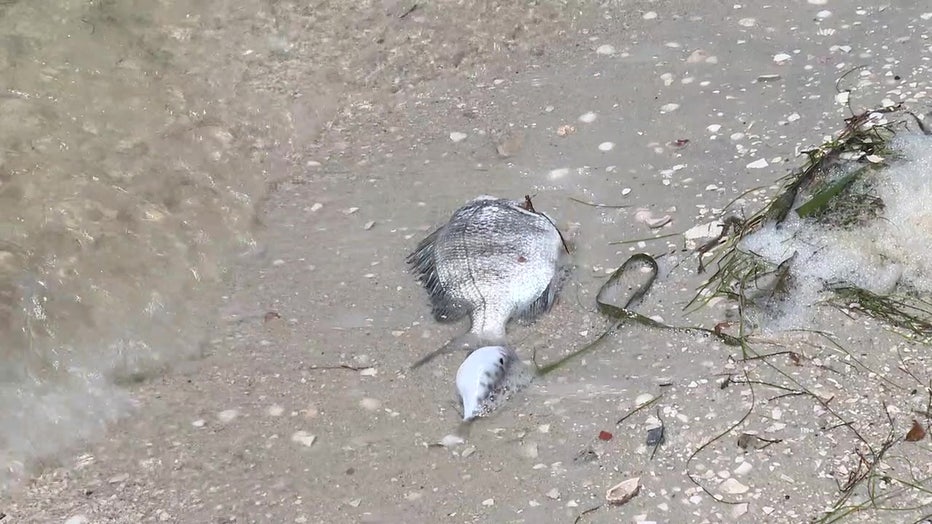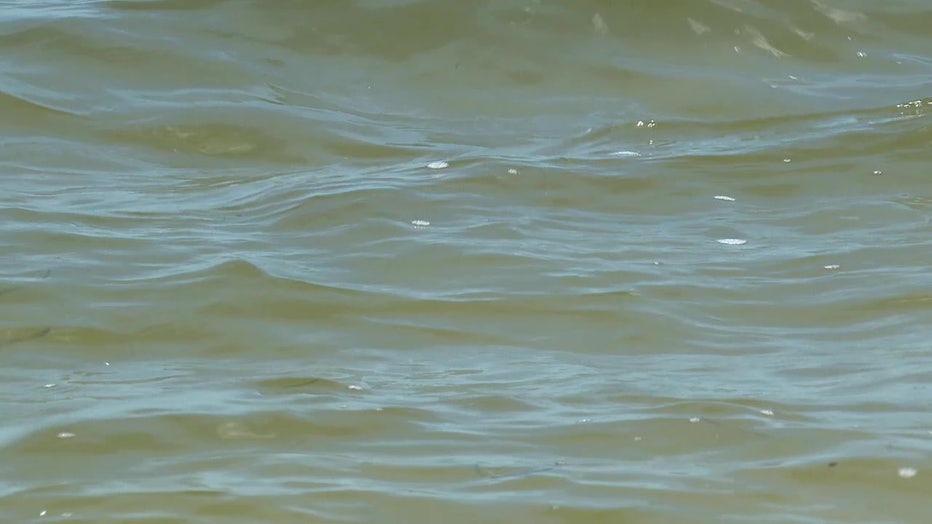Higher water temperatures causing fish kills along Palma Sola Causeway, Little Sarasota Bay
BRADENTON, Fla. - As temperatures outside have heated up, so have waters in the Tampa Bay area. Scientists said that warmer waters mixed with higher salinity can cause oxygen levels to drop, which can lead to fish kills.
Researchers said it's happening along the Palma Sola Causeway and Little Sarasota Bay, and it could continue if the higher temperatures persist.
READ: Manatee County votes on wetlands protections, residents concerned over potential changes

Along the shoreline of the Palma Sola Causeway in Manatee County, Dr. David Tomasko, the director of the Sarasota Bay Estuary Program, has spotted dead fish and crabs washing ashore.
Red tide isn’t present right now. In fact, the latest Florida Fish and Wildlife Conservation Commission (FWC) maps show red tide is not present anywhere in the state.
Dr. Tomasko said that marine life is dying due to very low oxygen levels in the water.
READ: Poachers removing hundreds of animals from waters on Anna Maria Island, boat captains say
"If the highest you can be is four, and you have enough life to drop the oxygen down like two or three milligrams per liter, then you will have a fish kill, and it looks like that’s what we have," he said. "The last reading that we’ve had for oxygen in this system during that last fish kill was less than one milligram per liter and that’s certainly low enough to cause a fish kill."

Dr. Tomasko said the historically high temperatures are part of the problem. Along the causeway, the water temperature remains in the low 90s.
"Warm water can’t hold very much oxygen and salty water can’t hold very much oxygen," he said. "What we have is very warm and very salty water and the combination of those two means about the highest level of oxygen we can have is about four milligrams per liter."
Dr. Tomasko said it’s up to the community to protect our waterways and try to come up with a solution.
"Our water has been getting warmer for 50 years in Sarasota Bay, Gulf of Mexico for about the same amount of time. If we aren’t going to address the issues of why the water is warmer, then we will have to address the thing we can do is nutrients," said Dr. Tomasko.
The Florida Fish and Wildlife Conservation Commission said they have received multiple reports of the fish kill in Palma Sola Bay.
The FWC said the dissolved oxygen was measured at 0.78 mg/L. The suspected cause of this fish kill was Low Dissolved Oxygen, and the reported affected species were Lined Seahorse, Burr fish, Lizardfish, Blue Crab, Toadfish, Sole, Flounder and some unidentified species.
The FWC encourages the public to participate as citizen scientists and assist with fish health research by reporting fish kills to FWC's Fish Kill Hotline at 1-800-636-0511.

